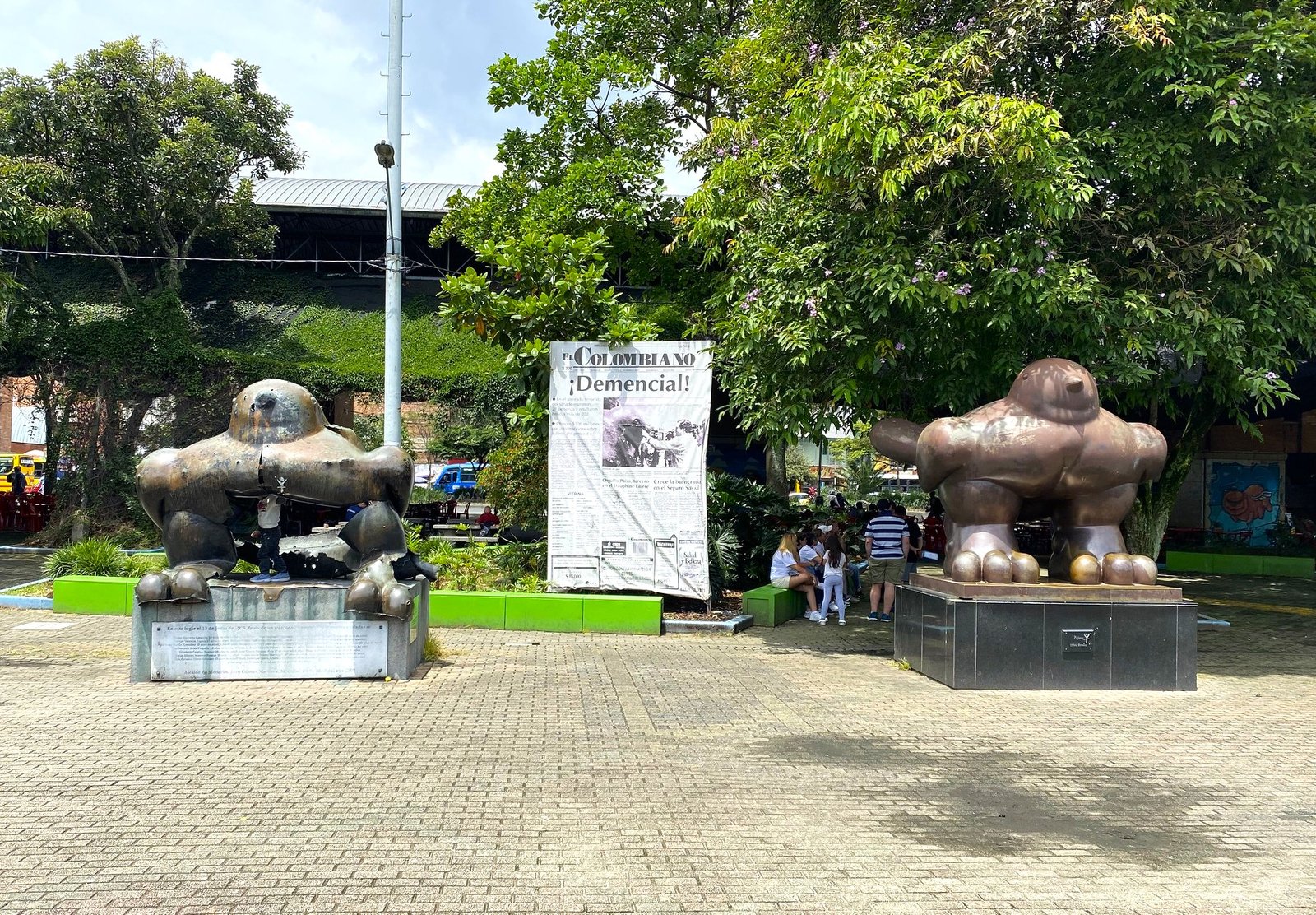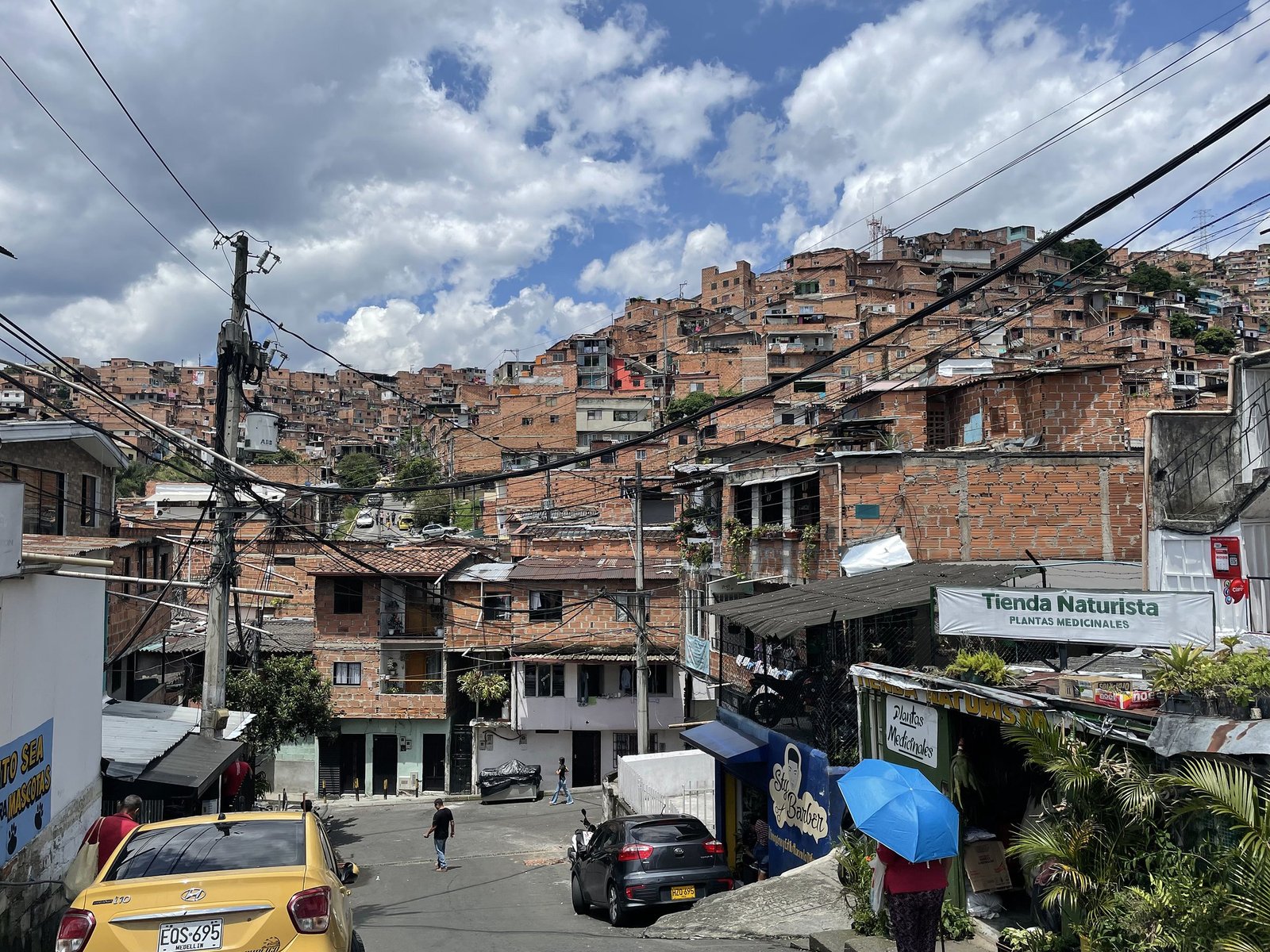A while ago, I wrote a single post about paragliding in Medellin, completely skipping over the part where we went to Colombia in 2022 and spent five days in Medellin. Now that I have a few free weeks after finishing all Norway posts and before the next trip springs up on us, I decided to go back and write more about Colombia.
Visiting Medellín itself didn’t seem like a great idea, at least not from a safety perspective. But then Victor got excited about visiting Comuna 13.
“Isn’t that the most dangerous neighborhood in the city?” I asked, trying to sound casual.
“Used to be!” he said, “In the 90s.”
“And now?” I asked.
“And now there are guided walking tours! And we’ll go on one.”
“Will the guide be armed?” I wanted to ask but bit my tongue.
I had already shown my hesitation at going paragliding on the last day of our itinerary, and Victor had been attempting to change those plans. I didn’t want the plans to change. All I wanted was acknowledgment that going to Colombia was mad, staying in Medellin was crazy, visiting Comuna 13 was insane, and then jumping off a mountain with a parachute strapped to your back was the final cherry on top of this unhinged cake.
Not for the first time in our travels, I decided not to worry about it until there was an imminent reason to worry. In other words, until it was too late.


So, we went to Colombia around the Fourth of July holiday, and Medellin turned out to be a gorgeous city full of art and culture, beautiful green spaces and fascinating museums, stunning landscapes, and incredible food. The day before our Comuna 13 tour, we took another Medellin walking tour and learned about a reign of terror and extreme violence perpetrated on the city in the 1980s by the Medellin Cartel, led by an “unnamed individual.”
“I will not name him.” The guide said somberly. “The whole world knows his name already. I will not give him any more power or notoriety by naming him. He doesn’t deserve the fame.”
“Pablo Escobar.” Victor mouthed to me silently. Victor, in general, has little faith in the U.S. educational system and in me, as a product of that system, specifically.
I just rolled my eyes in response. We walked through cozy alleys where 30 years ago an armed guerrilla group opened fire and killed dozens of people. Then, into a pretty city square with a giant ripped-up bird statue, where we learned that in 1995, a bomb filled with shrapnel was placed beneath this statue and exploded during a music festival, killing 20 people and wounding hundreds. A few years ago, a new, identical, intact statue of a bird was placed next to it – a symbol of renewal and hope. The whole tour was a sobering reminder of how far this country has come in the last 20 years.

The next day, we woke up early and made our way to the cable car, which took us up the slopes of the Aburrá Valley, towards Comuna 13, while we gawked at the breathtaking view of the city sprawled below. The physical layout reminded me of favelas in Buenos Aires, the poorly constructed slums built on steep mountains by migrants who couldn’t afford to live in the city below. And this was the same story as in Argentina. As Medellín's industrial growth expanded throughout the 20th century, large numbers of people from rural areas, seeking better opportunities, migrated to the city in search of work. They built homes without legal title to the land, without basic infrastructure like electricity, water, and sewage systems, and without any proper city planning, which meant that houses were often sitting on top of each other with no official streets or alleys.
We met up with our tour guide, and he was a cheerful young man who had spent his entire life living in Comuna 13. He was particularly cheerful that day because he had just bought his very own apartment in the same neighborhood and was moving there today, right after our tour. He even pointed out the windows to his future residence, as we walked past it, beaming with pride.
He told us about the complex and painful history of Comuna 13, the struggles with violence, poverty, and social exclusion. In the late 1980s, Comuna 13 became a battleground in the war between drug cartels, paramilitary groups, guerrilla forces, and the Colombian government. This was mostly due to its location near key routes used by drug traffickers, the disenfranchised population that was vulnerable to recruitment by armed groups, and the muddled landscape of the neighborhood, which made it easy to escape and hide from police unfamiliar with the location. The war continued into the new millennia, with special military operations by the Colombian government against drug cartels taking place in Comuna 13 as recently as 2002.


What we didn’t expect is that we were walking into a lively, crowded, and energetic neighborhood, full of cafes, street vendors, colorful murals, reggaeton, and salsa playing over each other from every corner, and so many tourists… There were times we had to squeeze through narrow crowded streets holding on to each other, so as not to get separated in the sea of people. How could a place with such a dark history have made such a drastic turnaround?
This change was the result of several key factors, including social reforms, urban renewal projects, and government and private sector support which led to an increase in tourism and economic development. Construction of the very cable car system that we took to the neighborhood helped tremendously as it connected the impoverished favelas of Comuna 13 with the rest of the city. The investment spurred a mild gentrification of the neighborhood and provided opportunities to its residents outside the illegal drug trade.
“Look, this artisanal brewery is run by a former drug lord,” our guide excitedly pointed out to a small brewery clinging to the side of the hill and surrounded by colorful street art.
The drastic change was palpable and right in front of our eyes.



Stranger even than a dangerous neighborhood becoming a tourist attraction was how tourists were able to visit. I already mentioned the cable car, but what I didn’t expect were the outdoor, open-air escalators that connect the steep hillside areas of the comuna. Our guide explained that before this intricate system of escalators were installed in 2011, Comuna 13 was isolated from the rest of the city due to its steep terrain. People living in the upper parts of the comuna had limited access to transportation, healthcare, education, and employment opportunities and had to climb long, strenuous flights of stairs every day.
After the tour, we sat down for lunch at one of the local restaurants overlooking the neighborhood and the valley. As we worked through bandeja paisa, a national dish of Colombia - a generous amalgamation of beans, rice, egg, chorizo, avocado, and fried plantain - we wondered about the fact that we were quite enjoying out time in what recently was the most dangerous neighborhood of the “murder capital of the world,” and the remarkable transformation that this place went through.


That evening, as we were unwinding after a long day at our Airbnb, we learned of disturbing news. It was July 4th, 2022, and that morning, there was a mass shooting during an Independence Day parade in Highland Park, a suburb only twenty minutes from where we live in the Chicagoland area. Seven people were killed, and 48 others were wounded by bullets or shrapnel.
I grabbed my phone and saw a message from my sister, “We are ok.”
I learned that her family considered attending the parade in Highland Park but decided to go to the one in Vernon Hills instead. I could not stop shaking, overwhelmed with the idea of how close such senseless violence came to my own family.
It is ironic to consider that had we, logically, decided against traveling to Colombia over safety concerns, we could have easily ended up in a violent and dangerous situation, not far from home. But even as I mulled these anxious thoughts in my head, the lessons of the day stayed with me. Change is possible. If a dangerous and impoverished area such as Comuna 13 can become a safe and vibrant haven, then one day, U.S. cities will be rid of gun violence. One day.

